Rice comes in many different shapes, sizes, textures, and aromas, and can be used in many different ways.
In this simple guide, you'll learn about 16 most common rice types, their unique characteristics, and how to use them in your cooking!
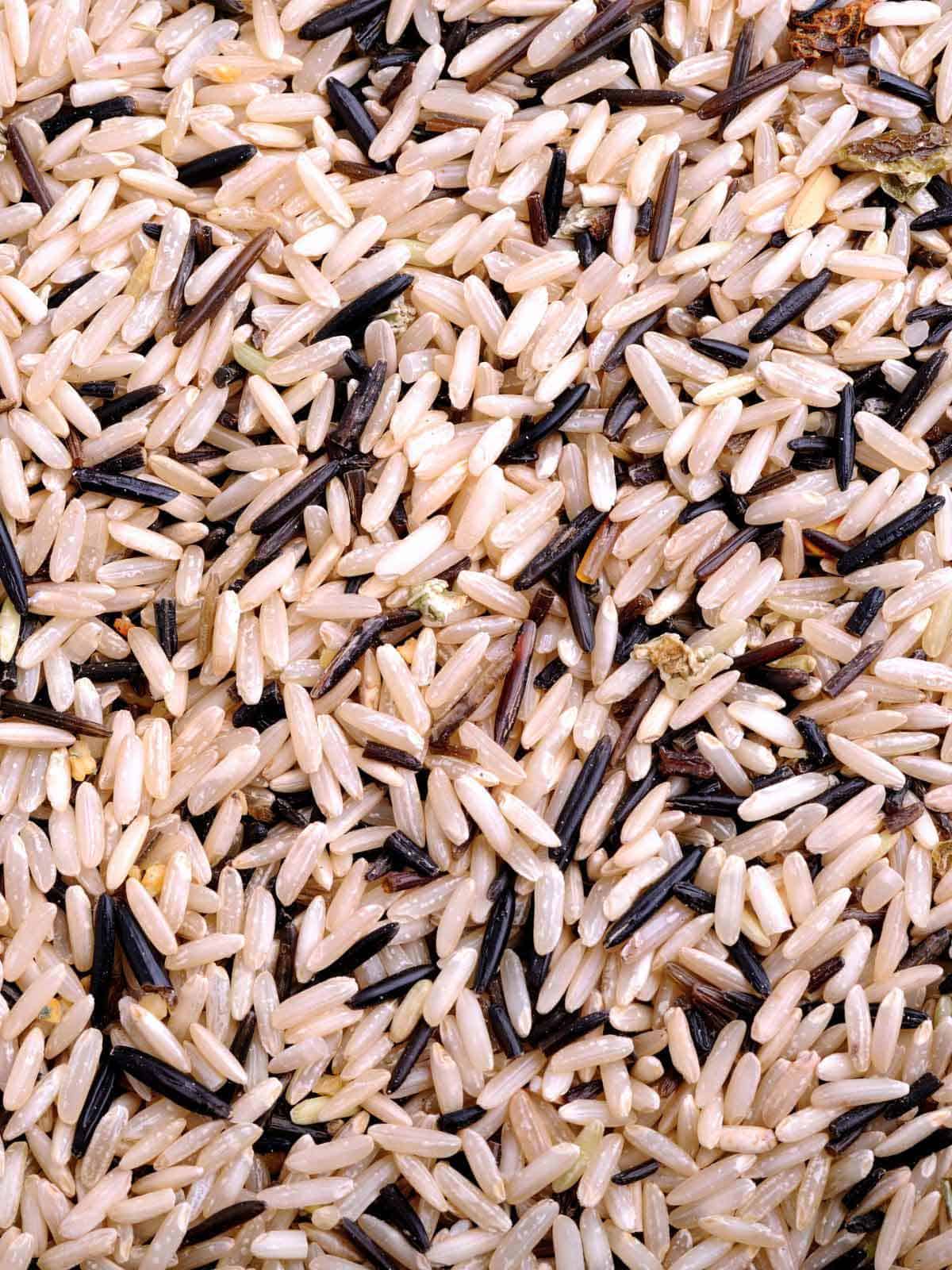
An Introduction to Rice
Rice (the plant species known as Oryza sativa) is a cereal grain that belongs to the grass family Poaceae.
It’s the seed of a plant that is native to Asia, where it has been cultivated for over 10,000 years.
Rice is grown in a variety of climates and regions around the world, making it a staple food for a significant portion of the global population.
Rice can be categorized into three primary types based on grain size: long-grain, medium-grain, and short-grain.
Each of these types has its unique qualities and cooking uses.
These differences in grain size influence the texture of the rice, which means that long grain, medium grain, and short grain rice are each better suited for different cooking purposes.
Jump To
- An Introduction to Rice
- 🍚 Types Of Rice
- Long Grain vs Short Grain Rice
- Long-Grain Rice Varieties
- 1. Basmati Rice
- 2. Jasmine Rice
- 3. American Long-Grain Rice
- 4. Texmati Rice
- Medium-Grain Rice Varieties
- 5. Arborio Rice
- 6. Carnaroli Rice
- 7. Calrose Rice
- Short-Grain Rice
- 8. Japanese Short-Grain Rice
- 9. Sticky Rice (Glutinous Rice)
- 10. Bomba Rice
- Other Types of Rice
- 11. Wild Rice
- 12. Black Rice (Forbidden Rice)
- 13. Red Rice
- 14. Brown Rice
- 15. Parboiled Rice
- 16. Cauliflower Rice
- How to Choose the Right Rice for Your Dish
- Rice Grain Parts Explained
- The Process
- Tips for Cooking with Rice
- More Rice Recipes You’ll Love
- Rice FAQs
- Did You Like This Recipe?
- You'll Also Like
- Comments
Want to Save This Recipe?
Enter your email and we’ll send the recipe directly to you!
By submitting this form, you consent to receive emails from The Yummy Bowl.
🍚 Types Of Rice
Long Grain vs Short Grain Rice
Long grain rice tends to have a longer, more cylindrical shape, while short grain rice tends to be shorter and wider.
Long-Grain Rice Varieties
- Long grain rice measures three to four times longer than it is wide.
- Light and fluffy texture that separates nicely when cooked.
- Great for dinner/lunch bowls, pilafs, casseroles, and stir fries.
1. Basmati Rice
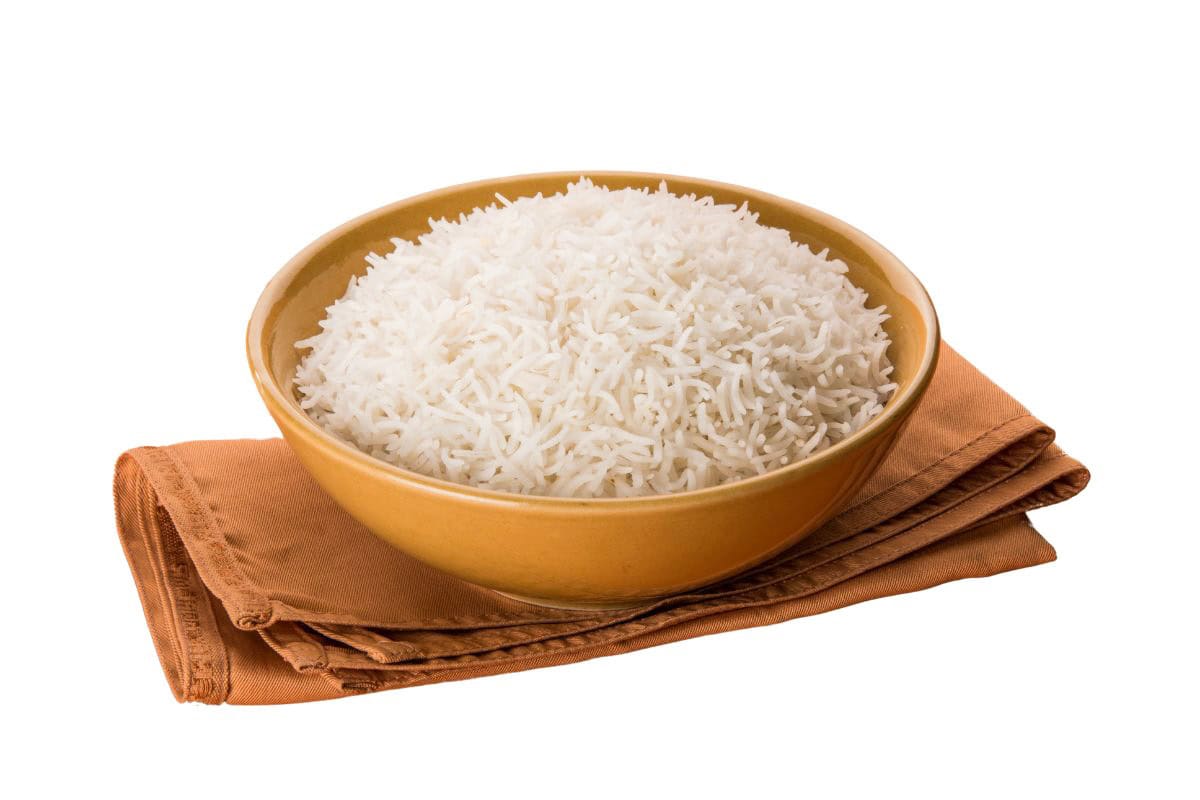
Basmati rice is a fragrant and slender long-grain rice that originates from India.
It’s known for its distinctive nutty or floral aroma. Basmati rice is popular for its fluffy texture.
🍴 Uses: Perfect for dishes like biryani, yellow rice, pilaf, fried rice and other Indian and Middle Eastern cuisines.
2. Jasmine Rice
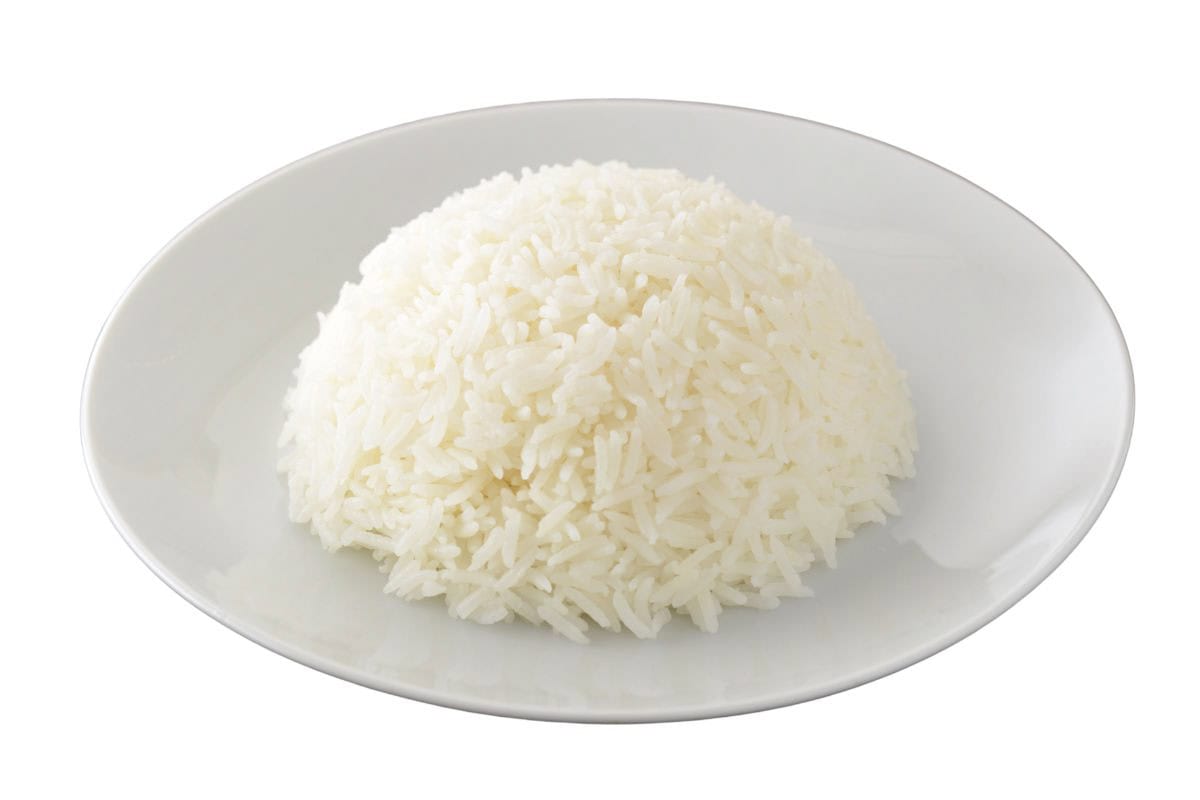
Jasmine rice, primarily grown in Thailand, is another aromatic long-grain rice. It has a subtle floral fragrance and a slightly sticky texture when cooked.
🍴 Uses: Jasmine rice pairs well with a wide range of Asian dishes (try it with honey garlic chicken) and is a staple in Thai cuisine 9serve it with Thai basil chicken).
3. American Long-Grain Rice
American long-grain rice is a versatile rice commonly used in the United States and around the world.
It's known for its slender, non-sticky grains that separate easily when cooked.
🍴 Uses: It’s ideal for rice and beans, stir-fries, and pilaf.
4. Texmati Rice
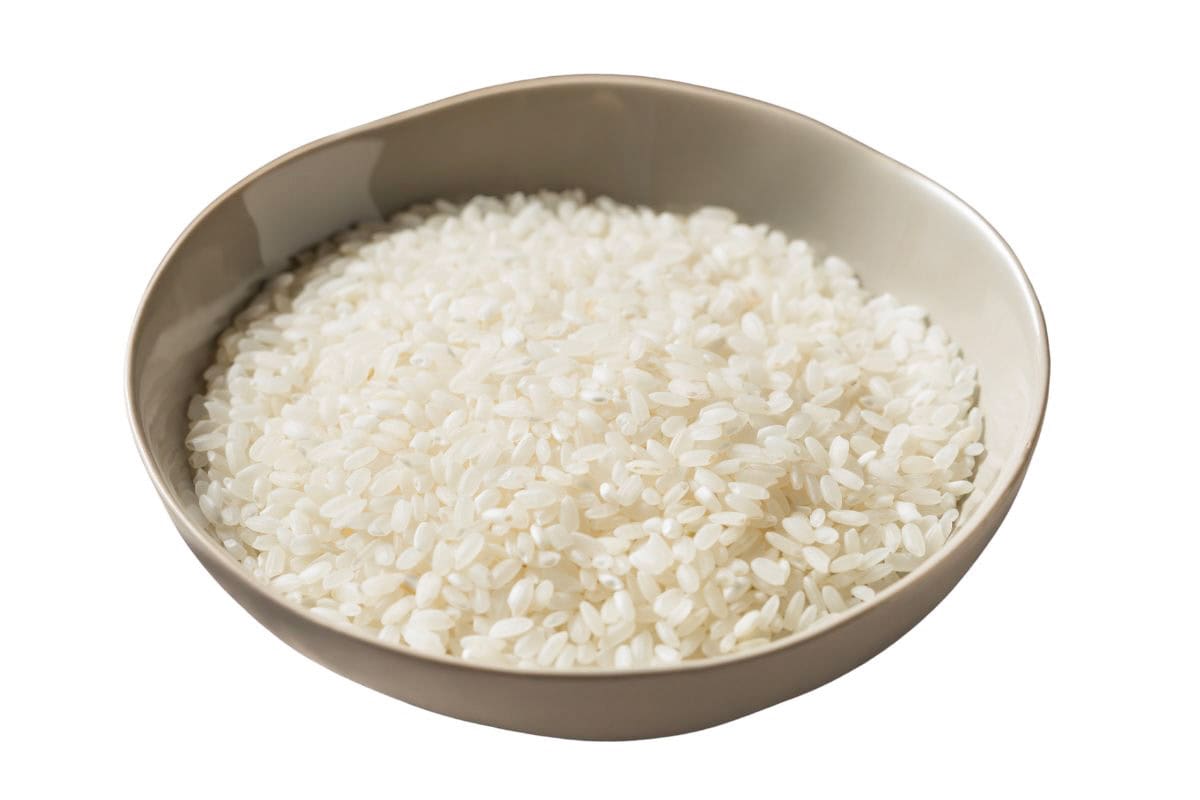
Texmati is a trademarked long-grain rice, known for its nutty aroma and distinct flavor.
🍴 Uses: It is often used in Tex-Mex cooking (try enchilada stuffed peppers), as well as in various rice salads and pilafs.
Medium-Grain Rice Varieties
- Medium grain rice has shorter and wider shape.
- Chewy, tender, and slightly sticky texture after cooking.
- This type of rice is often favored for dishes such as risotto, paella, and various side dishes.
5. Arborio Rice
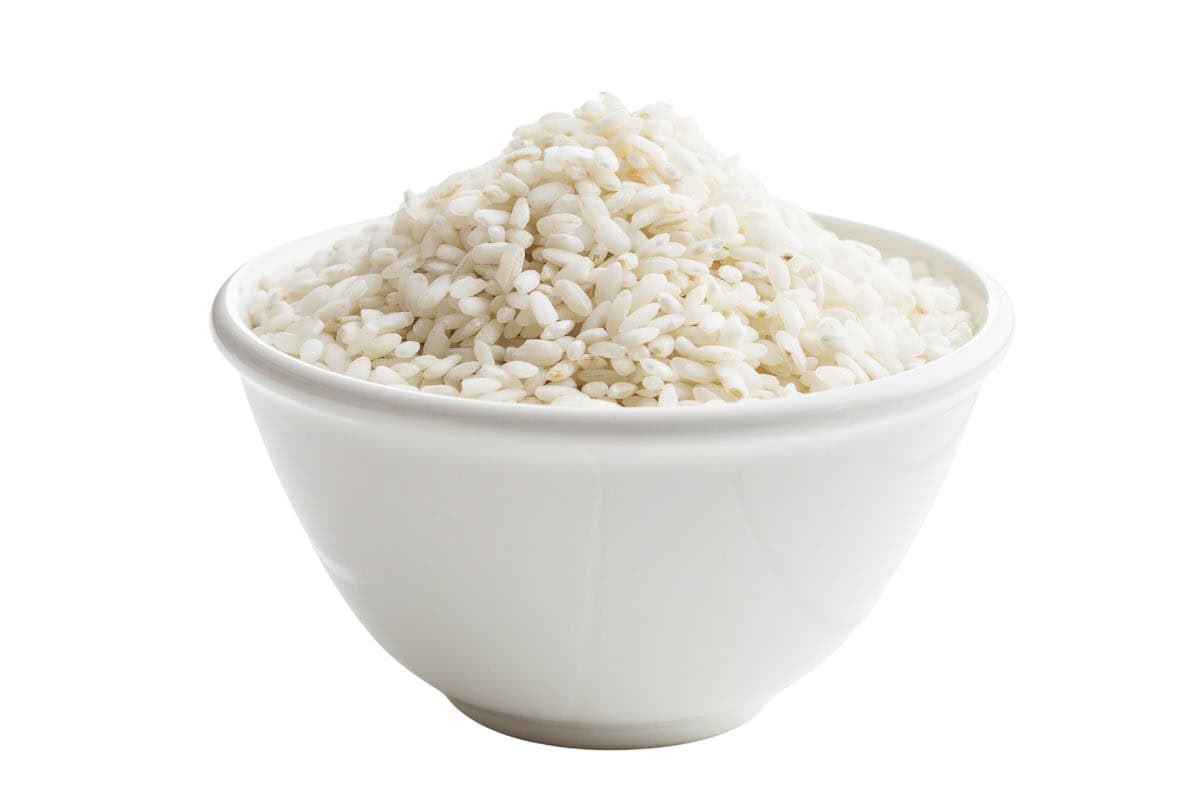
Arborio rice is a starchy, medium-grain rice commonly used in Italian cuisine, especially for making risotto.
🍴 Uses: It has a unique ability to absorb liquid while maintaining a creamy texture, making it ideal for creating rich and creamy dishes.
6. Carnaroli Rice
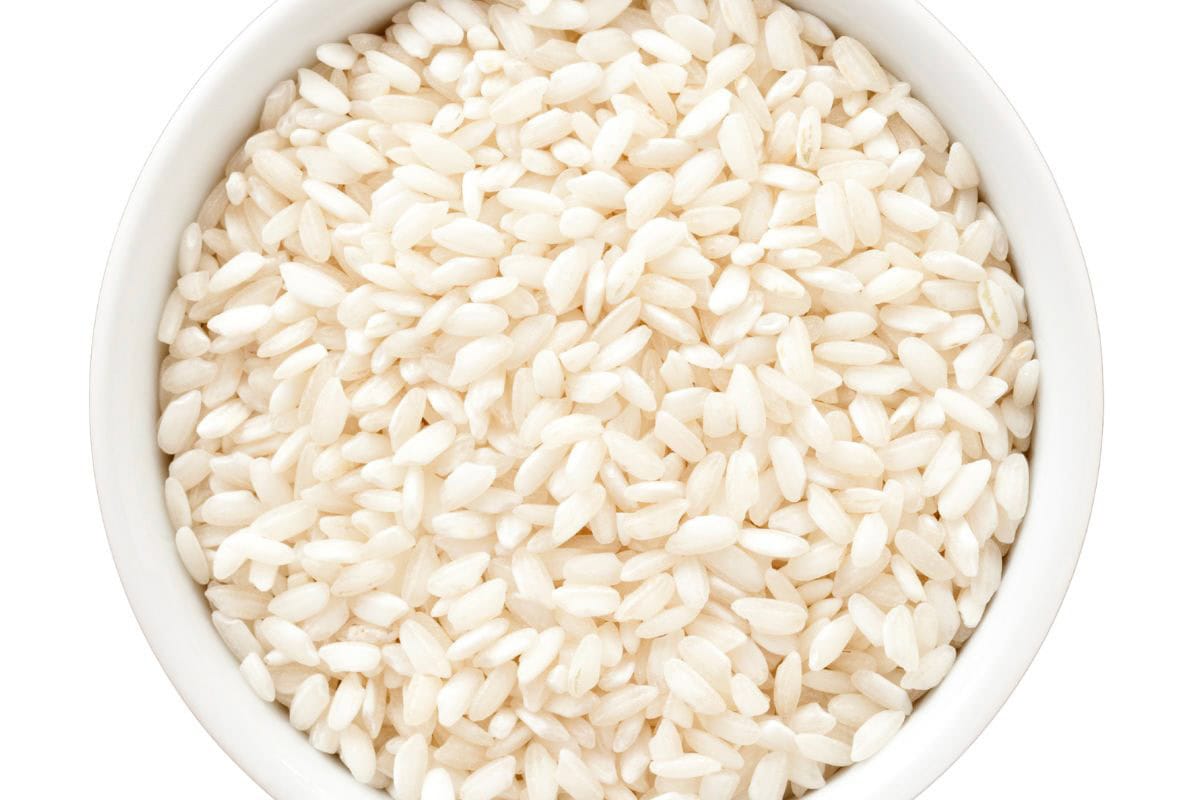
Similar to Arborio rice, Carnaroli is another popular choice for making risotto.
It’s often referred to as the "king of rice" due to its high starch content and incredible texture.
🍴 Uses: Carnaroli rice is a popular choice for risotto (try our butternut squash risotto), the classic Italian dish by slow cooking rice with broth and other ingredients until achieving a creamy consistency.
7. Calrose Rice

Calrose rice is a medium-grain rice that’s popular in California and other parts of the United States.
🍴 Uses: It’s great for making sushi and rice bowls due to its sticky texture and slightly sweet flavor.
Short-Grain Rice
- Short grain rice is typically less than twice as long as it is wide.
- Soft, tender, and sticky texture when cooked.
- Best for sushi, poke bowls, and rice balls, owing to its ideal consistency for shaping and holding together in various dishes.
8. Japanese Short-Grain Rice
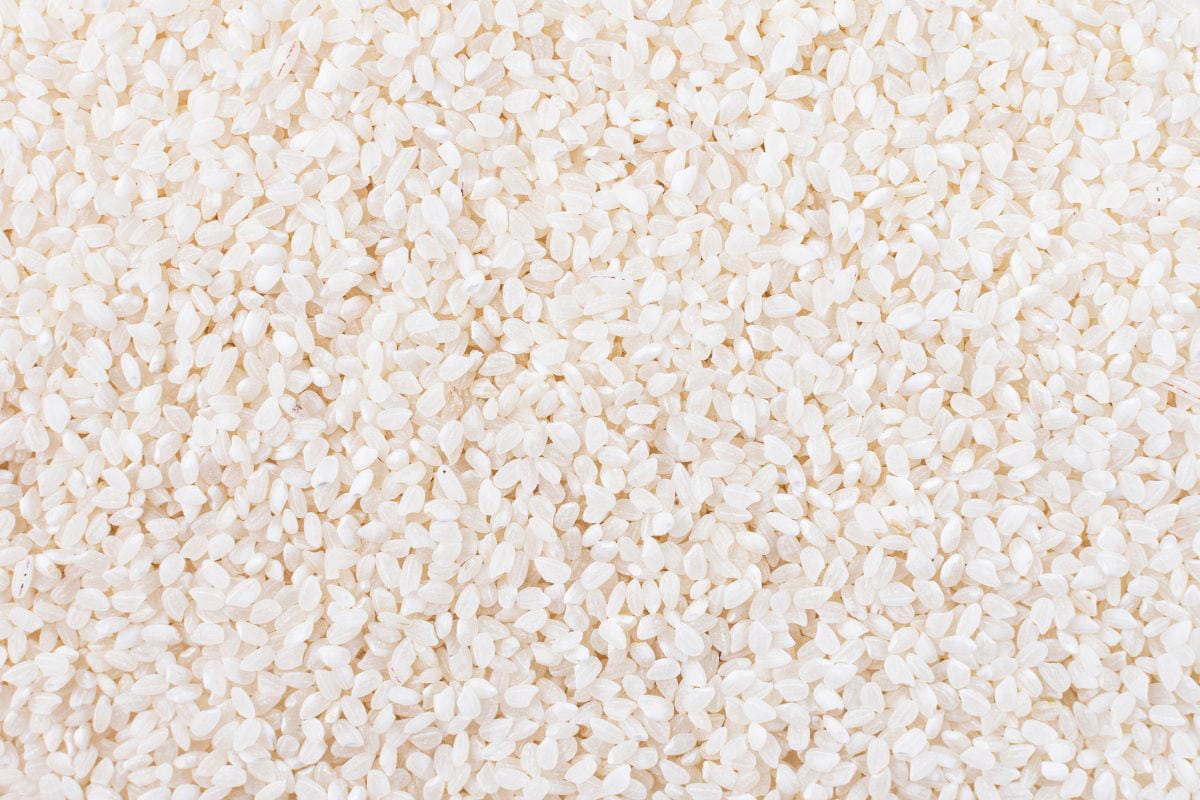
Japanese short-grain rice is a staple in Japanese cuisine. It has a round, plump shape and a sticky texture that holds ingredients together.
🍴 Uses: It is used to make dishes like sushi, onigiri (rice balls), and donburi (rice bowls). I like to use it in salmon rice bowl or turkey meatballs greek bowl.
9. Sticky Rice (Glutinous Rice)
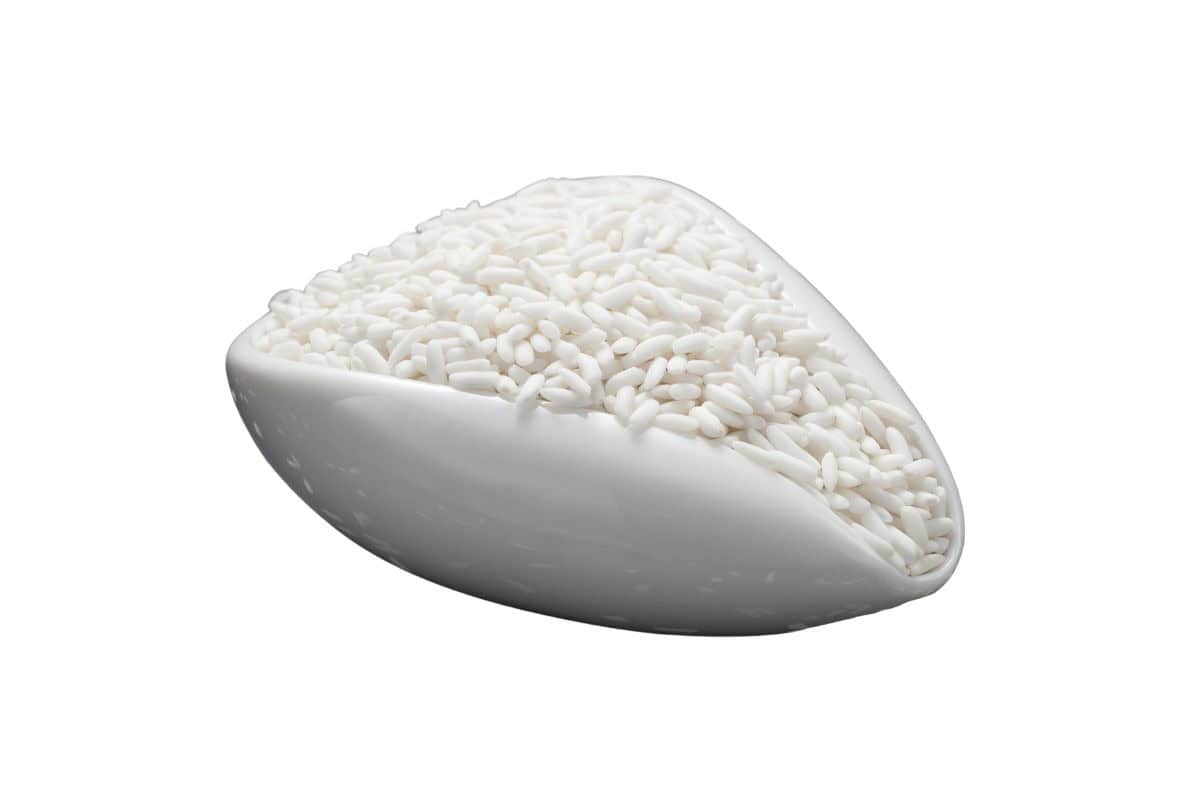
Sticky rice, also known as glutinous rice, is a short-grain rice that is exceptionally sticky when cooked.
🍴 Uses: It is a key component in various Asian desserts, as well as dishes like Thai sticky rice with mango and Chinese zongzi.
10. Bomba Rice
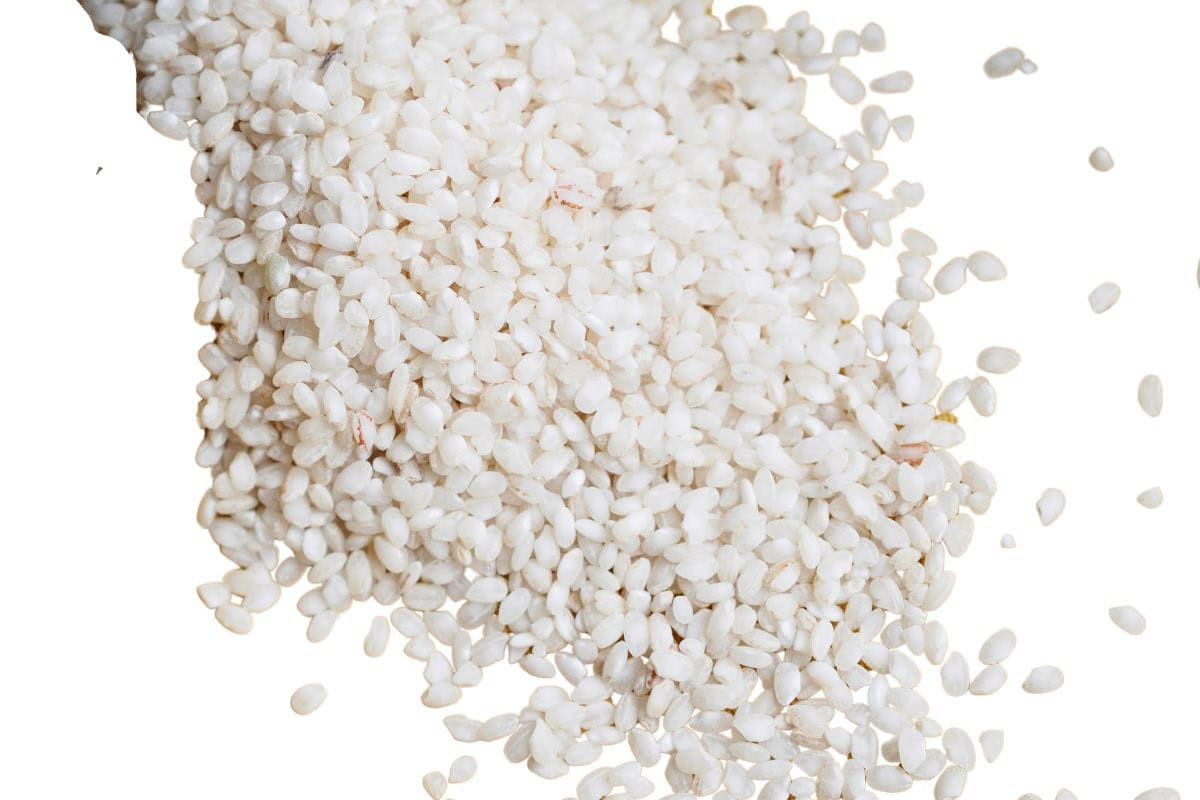
Bomba rice, originating from Spain, is traditionally used in paella, a famous Spanish rice dish.
It's a short-grain rice prized for its remarkable flavor absorption.
When cooked, it maintains a firm, chewy texture, with each grain retaining its integrity and not sticking together, thanks to its amylose content.
🍴 Uses: Bomba rice is popular in paella, and other Spanish dishes.
Other Types of Rice
11. Wild Rice
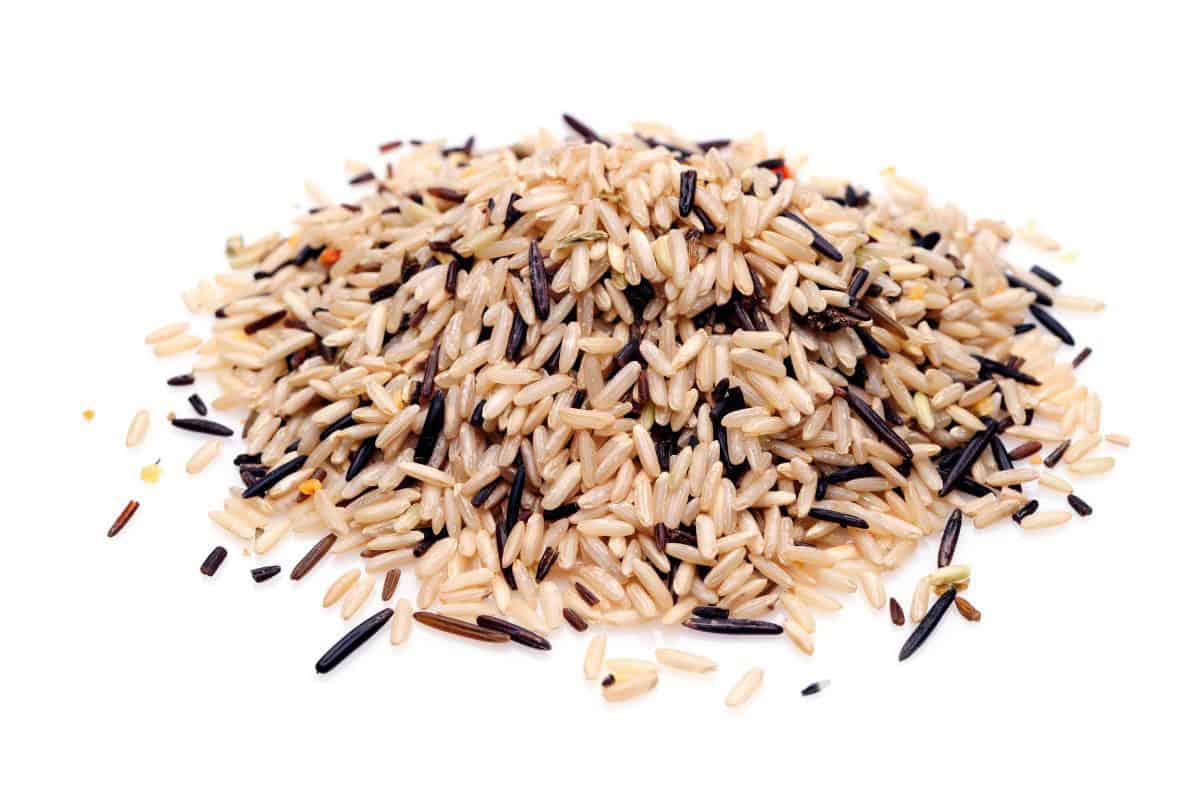
Did you know that wild rice is not technically rice but the seed of a grass native to North America?
It originates from a grassy aquatic plant and is prized for its high fiber and mineral content, as well as slightly higher protein levels compared to brown rice. Its has a robust, nutty flavor.
🍴 Uses: Popular for salads, stuffings, and as a side dish. We actually love to use it in dirty rice!
12. Black Rice (Forbidden Rice)
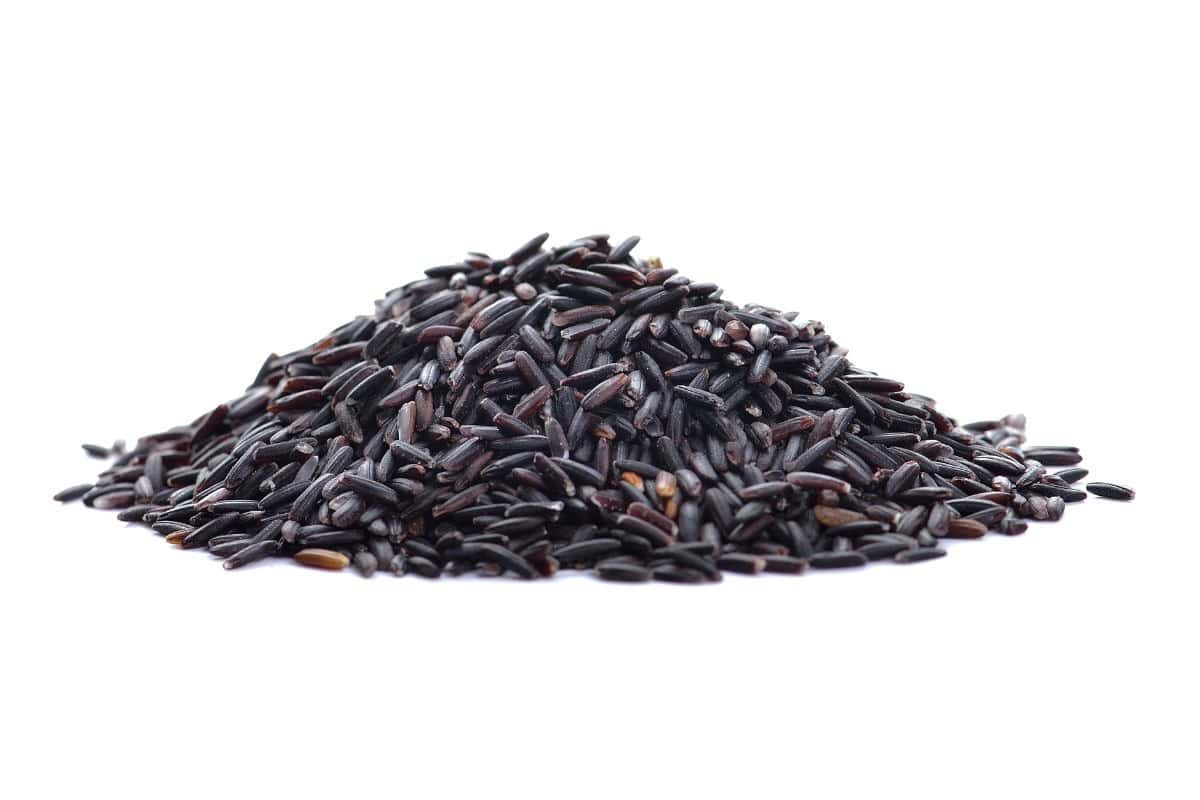
Black rice, often referred to as "forbidden rice," has a striking black or deep purple hue. It has a slightly sweet and nutty flavor and is rich in antioxidants.
🍴 Uses: Black rice can be used in both savory and sweet dishes.
13. Red Rice
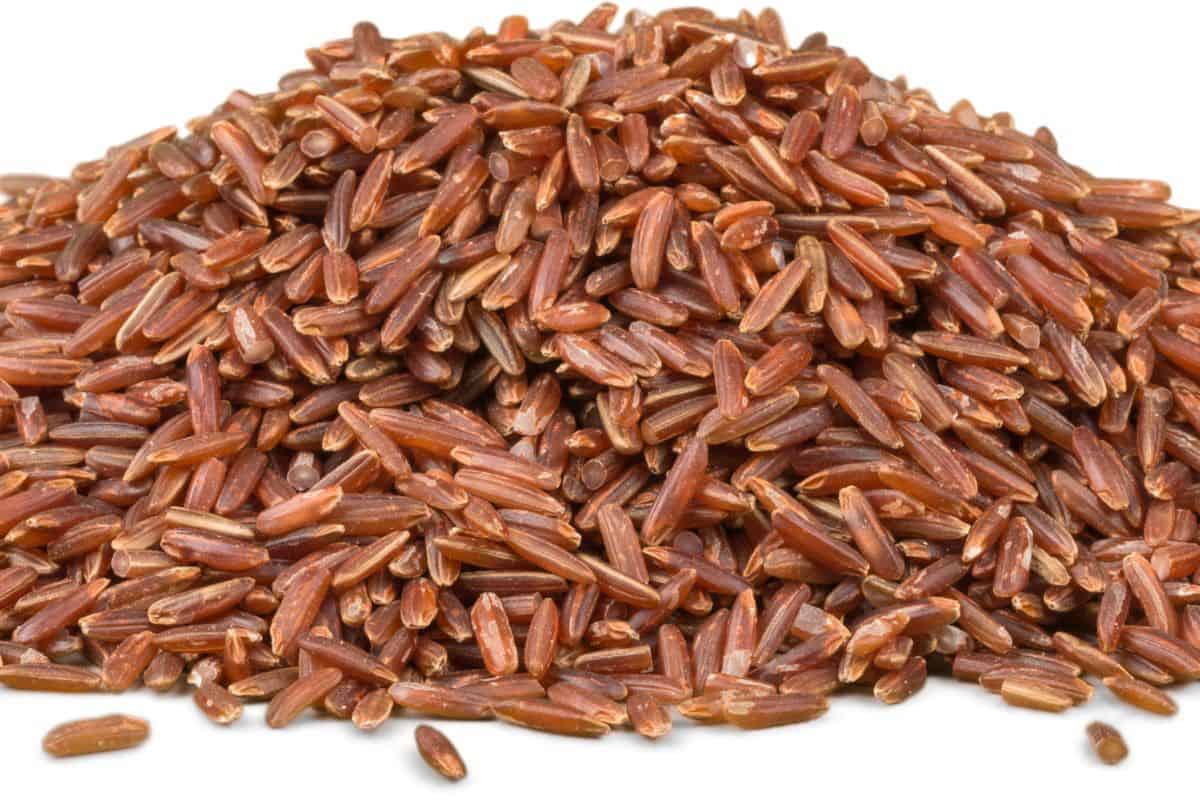
Red rice is known for its reddish-brown bran layer, which contains additional nutrients and antioxidants. It has a nutty flavor and a chewy texture.
🍴 Uses: For salads and side dishes.
14. Brown Rice
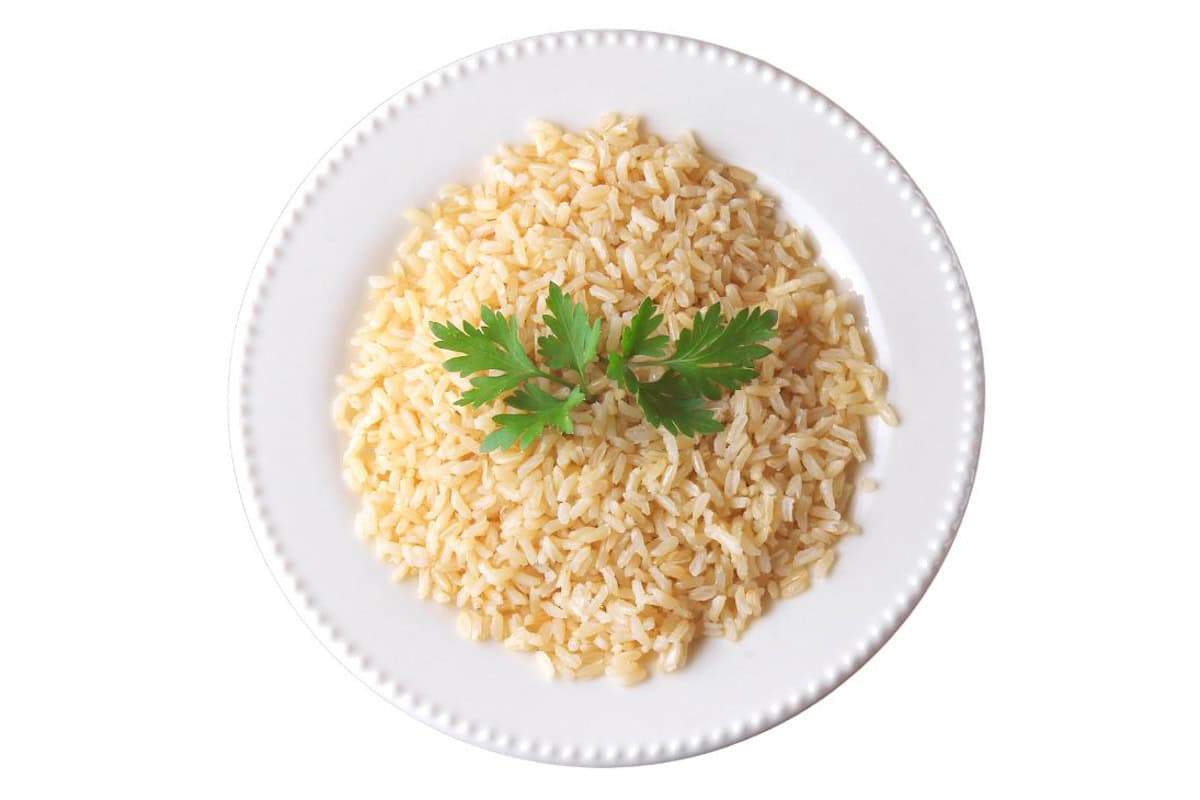
Brown rice is a whole grain rice that retains its bran layer, which provides extra fiber. It has a nutty flavor and a chewier texture compared to white rice.
🍴 Uses: In a variety of dishes, including stir-fries, pilafs, and salads.
15. Parboiled Rice
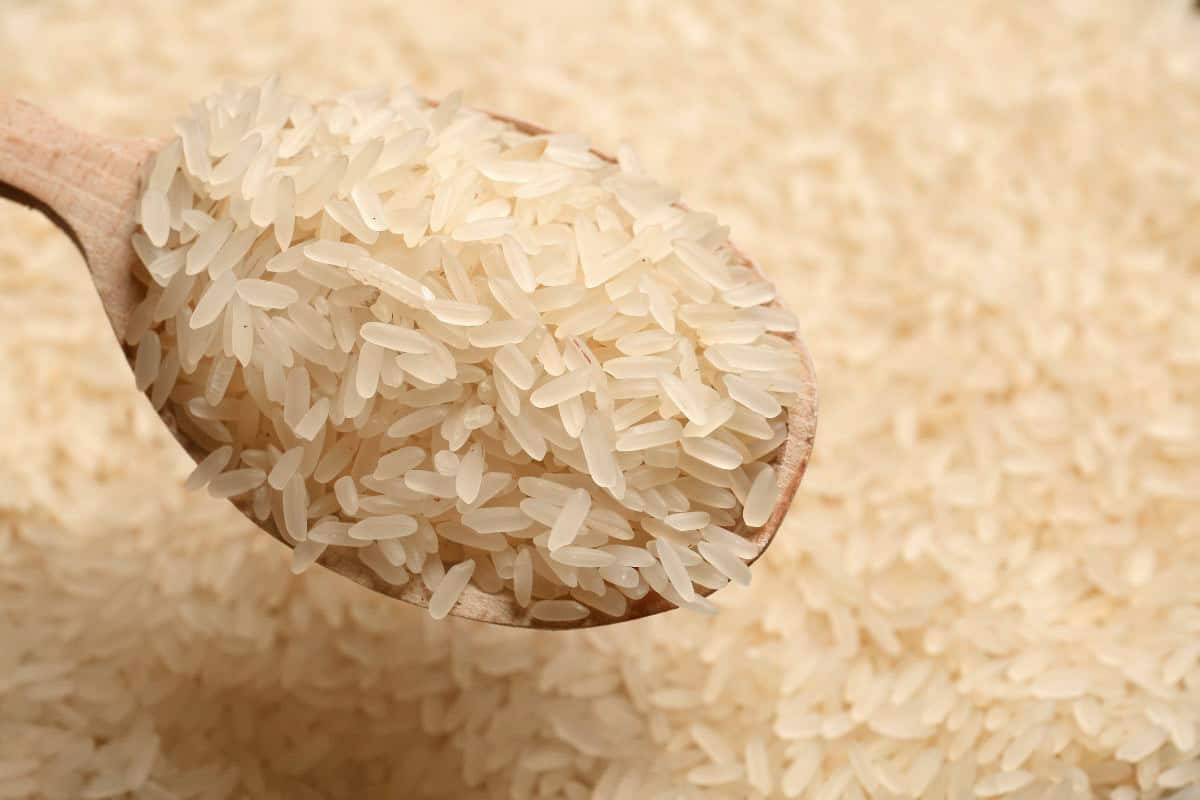
Parboiled rice is partially precooked before milling, resulting in a firmer and less sticky grain.
It is known for its ability to remain separate and fluffy when cooked.
🍴 Uses: Rice salads and dishes where distinct grains are preferred.
16. Cauliflower Rice
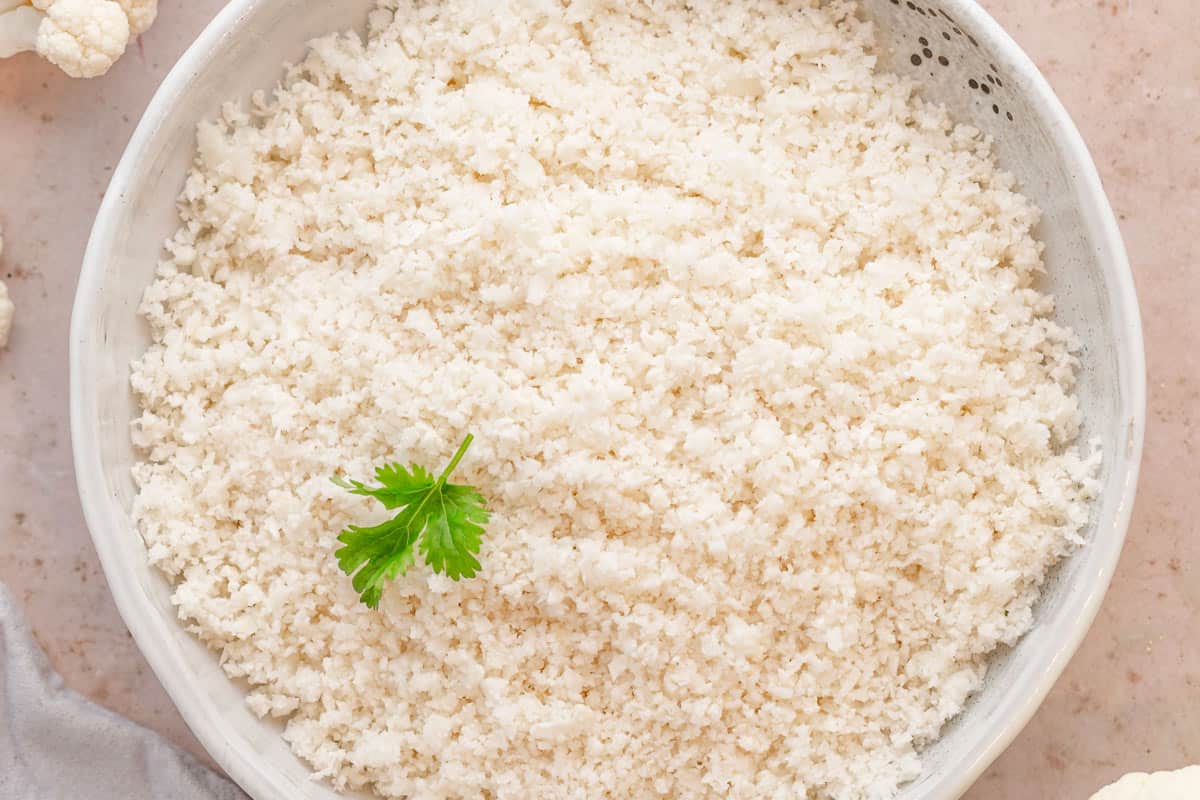
Cauliflower isn't rice or a grain (just like broccoli rice), but it can be grated into a suitable substitute for rice.
This alternative works well for people following keto or other low-carb diets, as it significantly reduces the carbohydrate content compared to traditional rice.
🍴 Uses: Anywhere you use traditional rice! Try swapping rice for cauliflower rice in greek bowls with meatballs or when making lime cilantro rice.
How to Choose the Right Rice for Your Dish
Selecting the right type of rice for your dish is essential to achieving the desired texture and flavor. Here are some key considerations:
- Cuisine Style: The type of cuisine you're preparing often dictates the choice of rice. For example, Basmati rice is ideal for Indian and Middle Eastern dishes, while Arborio rice is best for Italian risotto.
- Texture: Consider the texture you want to achieve. Long-grain rice varieties like Basmati yield fluffy, separate grains, while medium-grain rice like Arborio produces creamy, slightly sticky results.
- Aroma: Some rice varieties, like Basmati and Jasmine, have a distinct aroma that can enhance the overall flavor of your dish.
- Sticky vs. Non-Sticky: If you need the grains to stick together, opt for short-grain or glutinous rice. For separate grains, go for long-grain or parboiled rice.
Rice Grain Parts Explained
A rice grain comprises four main parts. It serves as a seed housing an embryonic rice plant, stored food, and a protective coat.
- Hull: Every grain of rice is encased in an outer straw-like outer hull, aka husk, which must be removed prior to consumption. It is inedible and is eliminated in all types of rice. Beneath the husk lies the bran.
- Bran: Under the hull, there is a tan-colored bran layer. While the bran layer is edible, it's commonly removed during further rice processing.
- White Rice: After removing the bran and germ layers, what's left is white rice (endosperm). It mainly consists of complex carbohydrates (starch), serving as the primary energy source for the germinating rice plant.
- Germ: Located beneath the hull, the germ, or rice kernel, is rich in nutrients. Packed with B vitamins, minerals, and proteins, it not only contributes to the color of rice but also enhances its nutritional value.
The Process
The bran, germ, and endosperm constitute the edible portions of the grain. During the milling process, the inedible husk is eliminated to produce brown rice.
Further milling to remove the bran and germ yields white rice.
Tips for Cooking with Rice
While rice may be considered a fairly easy ingredient to cook with, some tips and tricks should be applied for the best results.
Each rice variety requires specific cooking methods to bring out its best characteristics.
Here are some general cooking tips for various types of rice:
- For Long-Grain Rice: Rinse the rice before cooking to remove excess starch. Use a 2:1 water-to-rice ratio and cook with the lid on until the water is absorbed. Let it rest before fluffing.
- For Medium-Grain Rice: Rinse and soak medium-grain rice for a short time before cooking. Use a 1.5:1 water-to-rice ratio for a creamy texture in dishes like risotto.
- For Short-Grain Rice: Rinse short-grain rice to remove excess starch. Use a 1.25:1 water-to-rice ratio for stickier results - ideal for sushi and rice balls.
- For Wild Rice: Wild rice has a longer cooking time and requires more water than white rice. Use a 3:1 water-to-rice ratio and cook until the grains have split open.
- For Brown Rice: Brown rice takes longer to cook than white rice. Use a 2:1 water-to-rice ratio and allow for a longer cooking time. Pre-soaking can also help reduce the cooking time.
In addition to these tips, which are specific to each type of rice, remember to season your cooked rice to enhance its natural flavor!
More Rice Recipes You’ll Love
Looking for some delicious recipes to add these different varieties of rice to? Here are some of my top choices:
Rice FAQs
Actually, both have nutrition benefits. Brown rice is rich in dietary fiber, while enriched white rice provides essential nutrients like iron and B vitamins.
While brown rice does have a slightly lower glycemic index compared to white rice, the impact of this difference is relatively minor in the broader context of maintaining fitness and overall health (read more about different studies on brown rice vs white rice).
Can't choose between the two? Mixing white and brown rice together not only combines their nutrients but also enhances flavor for a wholesome meal.
Rice is not keto-friendly due to its high carbohydrate content. On average, ½ cups of long-grain white rice contains 22g of carbs.
1 cup of dry rice typically yields enough cooked rice for two to three adult servings or for two adults and two small children.
Always read the package, and follow the instructions. American rice is typically already cleaned to a higher standard and doesn't need rinsing.
In general, washing rice won't affect the bacterial content of cooked rice, as the high cooking temperatures will eliminate any bacteria present.
Washing rice might still be a good idea as in some regions it has been shown to rinse out 20% of plastics from uncooked rice. Washing rice and cooking in excess water has been shown to reduce arsenic content but also reduces the amount of enriched vitamins in the rice.
It will depend on the rice yo are using, read the package instructions!
The best ratio for cooking white rice: for 1 cup of rice, you'll typically need 1.5 cups of water to cook it either on the stove or in the oven.
Generally, 1 cup of uncooked rice yields about 3 cups of cooked rice.
You can reheat rice in 4 ways: on the stove, microwave, oven or steamer.
Did You Like This Recipe?
Leave a ⭐️⭐️⭐️⭐️⭐️ rating below and share it on Instagram, Facebook, and Pinterest!



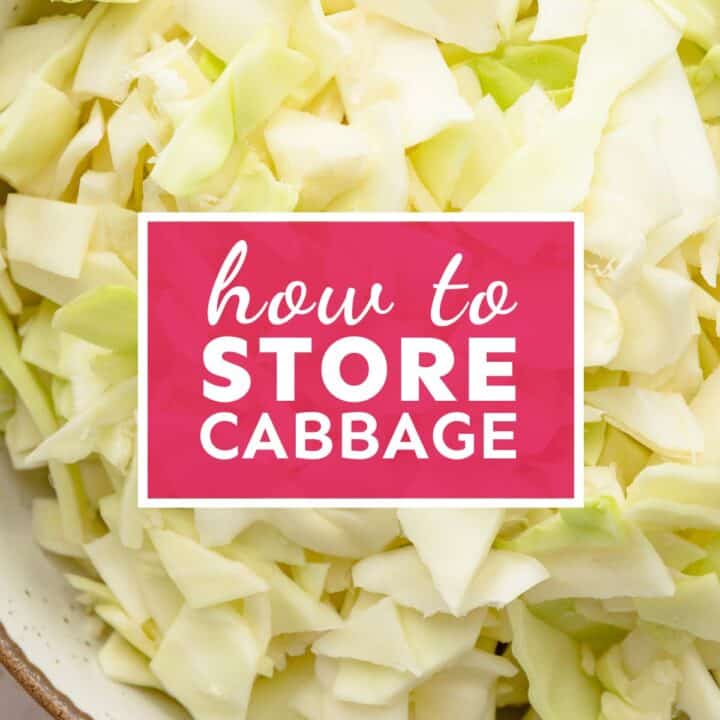


Leo P.
Just wanted to say, this article is a fantastic resource for someone like me who's still learning the ropes in the culinary world. The explanations of the different types of rice, along with the cooking tips, are precisely what I needed to read today. It's articles like these that inspire me to keep experimenting and learning in the kitchen. Great job, Julia!
Bethany J
Leo, totally agree with you there. This article is a gem for both novices and experienced cooks. It’s always refreshing to see such well-rounded content that appeals to a wide audience.
Dave L
I’ve been trying to mix up the kinds of rice I use at home, and this article just opened up a whole new world. Never knew about Texmati rice before, sounds like something I need to try next.
Julia
up to 3 days Dave!
Maxine Claire
Reading about all these varieties of rice takes me back to my travels in Asia and the Mediterranean. Each variety truly has its own character. I've tried most on the list and can vouch for the authenticity of the flavors described. Well done on capturing the essence of each type.
RickyT
love this guide on rice, especially the part about cauliflower rice. been trying to cut down on carbs and it’s been a game changer for my meal prep. Great stuff!
Samantha M
Hey Julia, thanks for the detailed list! I'm starting to get into cooking more complicated dishes and was wondering which type of rice would be best for a creamy risotto? I’ve heard Arborio is a good choice, but would Jasmine rice work as well?
Julia
yes arborio is for risotto:)
Julia
what's your favorite rice?